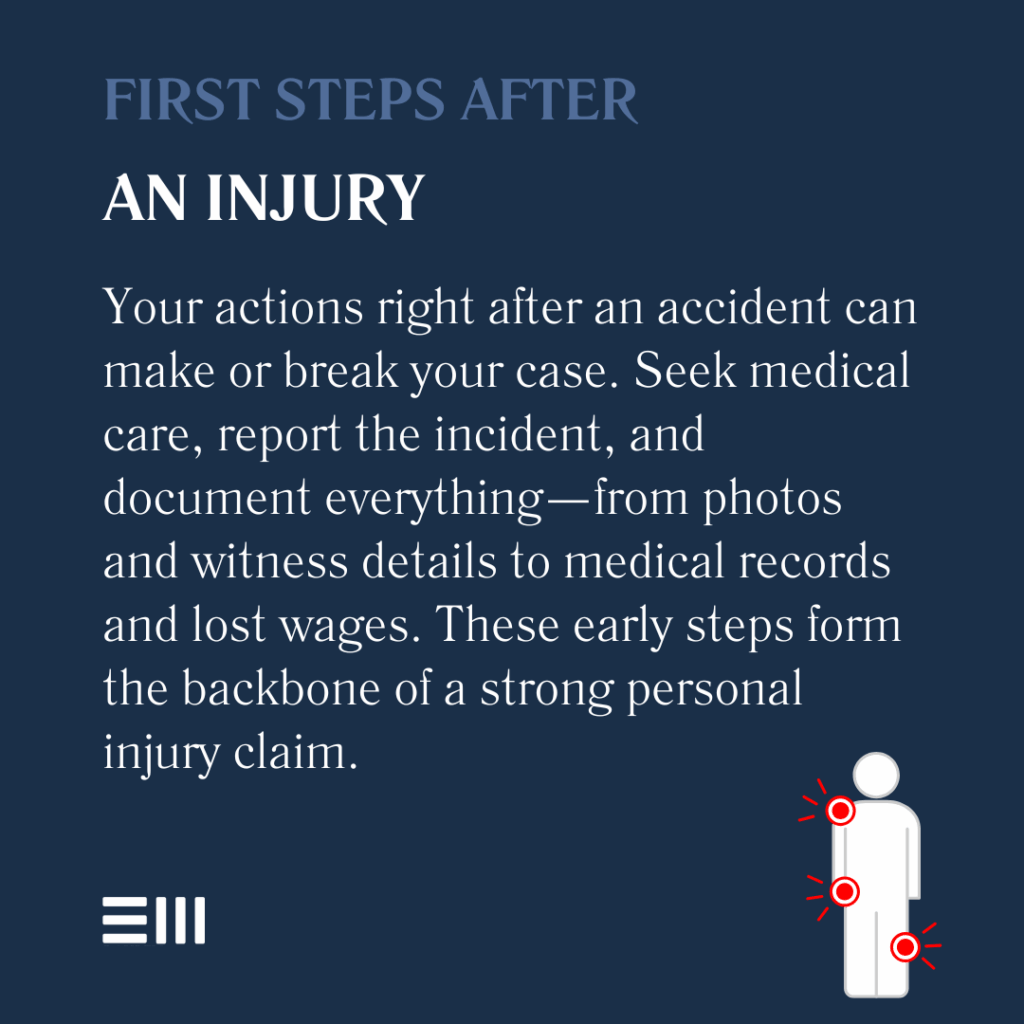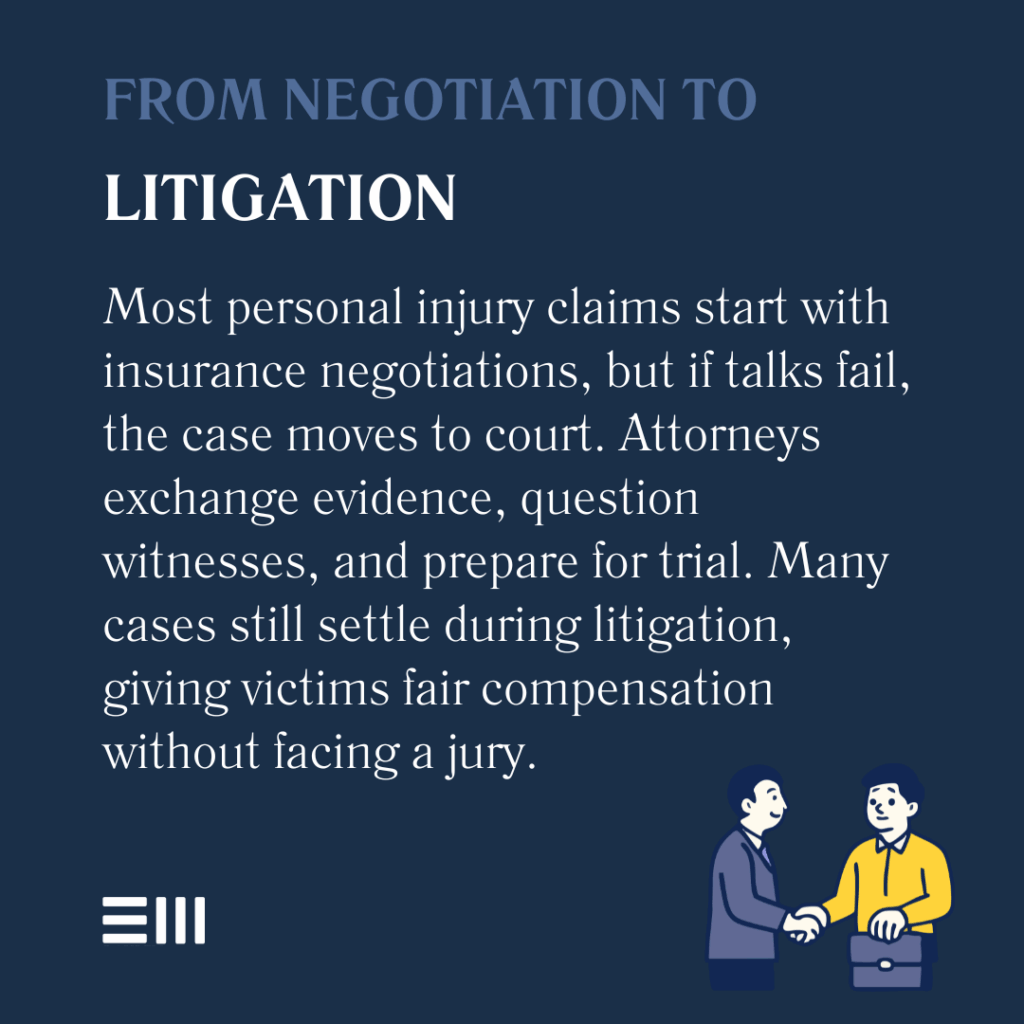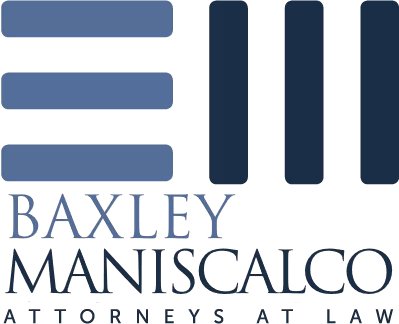
A single moment of negligence on an Alabama roadway or property can launch injured victims into months—sometimes years—of legal proceedings.
The path from accident scene to compensation check winds through insurance negotiations, medical evaluations, and legal deadlines that can overwhelm even the most organized individuals navigating recovery.
Understanding the Personal Injury Claim Process
What’s the personal injury claim process in Alabama? It begins the moment an injury occurs and follows a structured pathway designed to determine liability and calculate fair compensation.
Alabama’s legal system provides specific procedures for pursuing personal injury claims while protecting both injured parties and defendants.
The process typically unfolds over several months, though complex cases may extend much longer.
Each phase builds upon previous steps, creating a comprehensive case that demonstrates negligence, documents damages, and justifies compensation demands.
Understanding this progression helps injured parties make informed decisions at every critical juncture.
This knowledge empowers victims to actively participate in their cases rather than feeling swept along by unfamiliar procedures.
Initial Steps After an Injury
The first hours and days following an injury often determine case outcomes. Swift, appropriate action during this period preserves evidence and protects legal rights.
#1: Immediate Actions
The moments immediately following an accident require clear thinking despite shock and confusion. These initial responses create the foundation for the personal injury claim process in Alabama.
- Seek medical attention even for seemingly minor injuries that may worsen.
- Report the incident to appropriate authorities like police or property managers.
- Document everything through photos, videos, and written notes.
- Gather witness information including names and contact details.
- Preserve evidence such as damaged clothing or defective products.
These immediate steps capture crucial information that becomes harder to obtain as time passes.
#2: Early Documentation
Beyond initial emergency response, systematic documentation strengthens future claims. This early groundwork supports every subsequent phase of the legal process.
- Medical records detailing initial treatment and diagnoses.
- Incident reports filed with police or business owners.
- Insurance correspondence including claim numbers and adjuster contacts.
- Lost wage documentation from employers verifying missed work.
- Pain journals tracking daily symptoms and limitations.
Comprehensive early documentation prevents memory gaps and provides concrete evidence for negotiations.

Investigation and Case Building
Professional investigation transforms initial documentation into compelling legal arguments. This phase determines what the personal injury claim process in Alabama will yield in terms of potential compensation.
Attorneys begin by reviewing all available evidence and identifying additional investigation needs. Accident reconstruction experts may examine crash scenes or dangerous properties to determine exactly how injuries occurred.
Medical professionals review records and may provide expert opinions on injury severity, treatment needs, and long-term impacts.
Investigators also research defendant insurance coverage, assets, and prior similar incidents that might demonstrate negligence patterns. Witness interviews conducted during this phase often reveal crucial details overlooked in initial reports.
This thorough investigation creates the factual foundation supporting all legal arguments and damage calculations.
Filing and Negotiation
Armed with comprehensive evidence, the formal claims process begins. Understanding the personal injury claim process in Alabama requires recognizing the dual tracks of insurance claims and potential litigation.
#1: Insurance Claims
Most personal injury cases begin with insurance company negotiations before considering lawsuit filing. This process follows predictable patterns across different insurers.
- Demand letter presentation outlining injuries, liability, and compensation requirements.
- Initial offer response typically undervaluing the claim significantly.
- Counteroffers exchanged as parties move toward middle ground.
- Documentation requests for additional medical or financial records.
- Settlement discussions intensifying as litigation deadlines approach.
Insurance negotiations often resolve cases without court involvement, though success requires skilled advocacy.
#2: Pre-Litigation Settlement
Before filing lawsuits, parties often attempt settlement through direct negotiation or mediation. These efforts can save time and expense while maintaining privacy.
- Mediation sessions with neutral facilitators helping find common ground.
- Settlement conferences bringing all parties together for focused negotiations.
- Liability admissions sometimes expediting damage discussions.
- Structured settlements offering creative payment solutions.
- Confidentiality agreements protecting all parties’ interests.
Pre-litigation settlements provide certainty without trial risks, though they require careful evaluation of offer adequacy.
Litigation Process
When negotiations fail, formal litigation begins. What’s the personal injury claim process in Alabama shifts to court procedures with specific rules and timelines.
Filing a lawsuit initiates the discovery phase, where both sides exchange information through written questions, document requests, and depositions.
This process typically spans several months as attorneys gather testimony and evidence. Court-ordered mediation often occurs during litigation as judges encourage settlement before trial.
Pre-trial motions address legal issues and may eliminate certain claims or defenses before trial. Trial preparation intensifies in the months before court dates, with witness preparation and exhibit organization.
Most cases still settle during litigation, but some proceed through trial and potentially appeals.

Timeline and Expectations
Realistic timeline understanding helps manage expectations throughout what’s the personal injury claim process in Alabama. Various factors influence case duration significantly.
Simple soft-tissue injury cases may resolve within three to six months through insurance negotiations.
Moderate injury cases requiring extended treatment often take twelve to eighteen months from accident to resolution. Complex cases involving severe injuries or disputed liability can extend two to three years, especially if a trial becomes necessary.
Alabama’s two-year statute of limitations provides the outer boundary for filing lawsuits, though earlier action typically yields better results.
These timelines reflect averages, with individual cases varying based on unique circumstances.
Frequently Asked Questions About the Personal Injury Claims Process in Alabama
Common questions arise as injured parties navigate the personal injury claim process in Alabama. These answers address typical concerns throughout the journey.
How Much Does Hiring a Personal Injury Attorney Cost?
Most personal injury attorneys work on contingency fees, meaning they only collect payment from successful recoveries.
Standard contingency fees range from 33% to 40% of settlements or verdicts. Clients typically pay no upfront costs, with attorneys advancing case expenses for later reimbursement.
What Types of Damages Can I Recover?
Alabama law allows recovery for economic damages like medical bills and lost wages, plus non-economic damages including pain, suffering, and emotional distress.
Punitive damages may apply in cases involving particularly reckless conduct. Each case’s value depends on injury severity and impact.
How Long Will My Case Take to Resolve?
Case duration varies dramatically based on injury complexity, liability disputes, and defendant cooperation. Simple cases may settle within months, while complex litigation can span years. Your attorney should provide realistic timelines based on similar case experience.
What if I’m Partially at Fault?
Alabama follows contributory negligence rules, meaning any fault percentage bars recovery entirely. This harsh standard differs from most states and makes liability determination critical. Strong legal representation becomes essential when defendants allege shared fault.
Should I Talk to Insurance Adjusters?
Insurance adjusters seek information to minimize claim values, making unrepresented communication risky. Politely decline giving recorded statements without attorney guidance. Let legal counsel handle insurance communications to protect your interests.
Let Justice Roll
Understanding the personal injury claim process in Alabama empowers you to protect your rights, but experienced representation transforms knowledge into results.
Our skilled personal injury attorneys here at Baxley Maniscalco guide clients through every phase from initial consultation through final recovery. We handle complex negotiations, aggressive litigation, and strategic case development while you focus on healing.
Our contingency fee structure means you pay nothing unless we win, aligning our interests with yours completely.
Contact us today for a free case evaluation and discover how our decades of Alabama injury law experience can maximize your recovery and restore your peace of mind.
Can't find what you're looking for? Search our site below.










